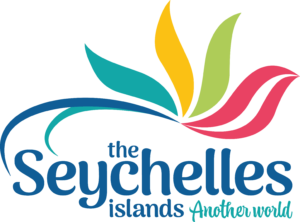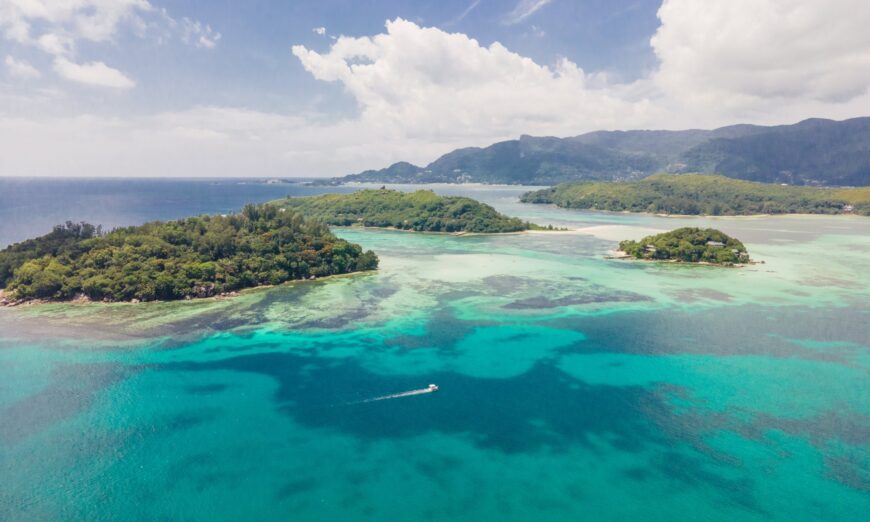
Seychelles lies northeast of Madagascar, an archipelago of 115 islands with roughly 98,000 citizens. Seychelles is a melting pot of many cultures which have commingled and coexisted since the first settlement of the islands in 1770. The three main inhabited islands are Mahé, Praslin and La Digue and the official languages are English, French and Seychellois Creole.
Culture
The Seychellois are a colourful and harmonious blend of different nationalities from across the globe, all of whom have brought something of their own customs and cultures to create a well-integrated, harmonious and vibrant modern island state with a distinct culture enriched from many continents.
Where other nations live in fear of their neighbours, Seychelles has successfully woven disparate influences into a live-and let-live philosophy in which harmony has become a way of life.
In Victoria (the world’s tiniest capital) a Roman Catholic cathedral sits beside an Anglican cathedral, a Seventh Day Adventist Church, a mosque, a Hindu Temple, and halls of worship for several other denominations.
In terms of religious orientation, French Catholicism has proved the most influential, even surviving British rule and popular Mass and other parish feasts are colourful occasions for Seychellois to dress up in their Sunday best and socialise.
The Creole Language, an adaptation of 17th Century French with other words and expressions coming from Africans and Malagasises, is the lingua franca and has been elevated to national language status, earning the same respect that English and French receive. Today, Creole is a written language as well as spoken, resulting in an outburst of creativity in plays, poetry and prose. The Creole culture is today a major attraction for worldwide visitors who want to experience a unique way of life and is showcased every year by the colourful Festival Creole, an animated tribute to everything Creole including the many distinct forms of Creole music, dance, literature and poetry.
Creole architecture is another important cultural aspect of the islands where the designs of some of the grand old houses with their steep roofs represent an architecture adapted for comfortable living in the tropics. Houses have many openings to catch the island breezes. Modern architecture attempts to assimilate traditional styles.
Yet another jewel of the cultural crown is cuisine and Creole gastronomy is born of this spectacular fusion of cultures and offers the subtlety and innovation of French cuisine as well as the piquant flavours and exotic culinary combinations of the East across a fascinating spectrum of textures, tastes, colours and ingredients.
Climate
Notwithstanding the many uncertainties associated with today’s global climate, Seychelles enjoys a year-round, glorious tropical climate and nearly 12 hours of sunlight due to its position just south of the Equator. All but its remotest, southern islands lie well outside the cyclone belt and the climate is such that there are no extremes of weather, with the temperature seldom dropping below 24°C or rising above 32°C.
North-west trade winds blow between the months of October and March when the sea is generally calm and the weather warm and humid, with average winds of 8-12 knots.
Traditionally, in January and February the islands receive their life-sustaining rains, briefly filling the rivers and streams and teasing the vibrant foliage into rainbows of colour. Although this is recognised as Seychelles’ traditional rainy season, the rains tend to be less heavy than on, for example, the Indian continent, and may indeed, depending on the year, be very light.
Between the months of May and September the south-east trade winds generally bring drier, cooler weather, and more boisterous and agitated seas – particularly on the south-eastern coasts of the islands, along with wind speeds in the region of 10-20 knots.
Being a tropical island, however, means that, normally brief, tropical downpours can occur at any time of the year.
Geography
Seychelles is an archipelago of 115 islands dotted across 530,000 sq miles (1,374,000 sq km) of the western Indian Ocean.
The 41 tall, granitic, Inner Islands together make up a total area of 247.2 km2. They cover a total of 54% of the total Seychelles land area where more than 99% of the Seychelles population lives and include the main, and largest, island of Mahé that contains the lion’s share of government infrastructure, services, retail and tourism facilities followed by Praslin, the 2nd largest island and finally La Digue.
The remaining 74 islands are the Outer Islands, chiefly low-lying reef islands, sand cays and, in some cases, spectacular atolls divided into five distinct island groups: Amirantes Group; Southern Coral Group; Alphonse Group; Farquhar Group and Aldabra Group; extending into the ocean in a general south-westerly direction and in a splendid arc heading for the east coast of Africa.
Overall, these islands are situated four to ten degrees south of the equator and between 480 km and 1,600 km off the east coast of Africa.
History
The Seychelles Archipelago is a group of 115 islands in the Indian Ocean that lie 1000 miles off the coast of East Africa, northeast of Madagascar.
The earliest accounts of these islands are from the 8th century CE when Arab seafarers began to ply the waters of the Indian Ocean, opening up the first, and highly lucrative, trade routes with the east coast of Africa and beyond. Several of the names of Seychelles’ islands, such as Aldabra (Arabic for ‘the rock’) echo an early Arab connection to the Archipelago as do carvings on certain rocks on islands such as Silhouette and Frégate.
Although this Arab presence is undoubted, it is entirely possible that maritime activity around the African continent stretching back some 3000 years BCE may have placed adventurous Egyptian expeditions within sight of the remoter Seychelles islands. The same can be said of the Indonesian seafarers who crossed the Indian Ocean to eventually settle Madagascar between 200 and 500 CE and certainly the massive Chinese Treasure fleet of 1421 had the Seychelles Islands positioned on their charts.
Pirates escaping the European navies used the islands as a base as early as the 17th century CE and following a succession of French expeditions, a settlement was finally established in 1770 and the islands remained in French hands until the defeat of Napoleon at Waterloo, evolving from these humble beginnings to attain a population of 3500 by the time Seychelles was ceded to Britain under the treaty of Paris in 1814.
Under the British, Seychelles slumbered for the next 161 years as a backwater colony achieving a population of some 7000 by the year 1825. Seychelles achieved independence from Britain in 1976 to become a republic within the Commonwealth. Modern day Seychelles governance takes place in a framework of a presidential republic, whereby the President of Seychelles is both head of state and head of government, and of a multi-party system.
Society
The inhabitants of the Seychelles archipelago are known as Seychellois whose society the gradual melding of peoples from across the globe who first began to settle the islands in 1770 as part of a first French expedition.
The first settlers were a French party consisting of a prophetic assortment of a handful of European settlers, accompanied by their black slaves and retainers. After a rocky start fraught with much in-fighting and political intrigue, this settlement eventually took root. The abolition of slavery in 1865 created a vacuum in the workforce, which began to be filled in the mid-nineteenth century by contingents of Indian and Chinese workers, many of whom settled on the islands to become the merchant class.
The colonisation of the islands by the British after the defeat of Napoleon further moulded the islands and their population until they gained independence in 1976. This was followed in 1977 by a coup d’état, after which there followed an extended period of socialist, one party rule, with multi-party politics only returning in 1991.
Today, with a population of just under 100,000 predominantly Catholic inhabitants, Seychelles is a republic within the Commonwealth governed by a president who is head of both state and government and who is elected by popular vote for a 5-year term of office.
The nature of Seychellois society and its orderly evolution has ensured an enviable degree of ethnic integration, social harmony and political stability over many years which have all intertwined to lay a solid foundation for the social, economic and social growth that have been experienced in recent years and particularly since the opening of its international airport in 1972.
The Seychellois, who for much of their existence have been cut off from the rest of the world, have developed into an enterprising, flexible and innovative people open to change and keen to be a part of the mainstream of human endeavour.
Levels of religious and ethnic tolerance within society are high and the outgoing nature of the Seychellois has ensured that they take their rightful place among the community of nations.

